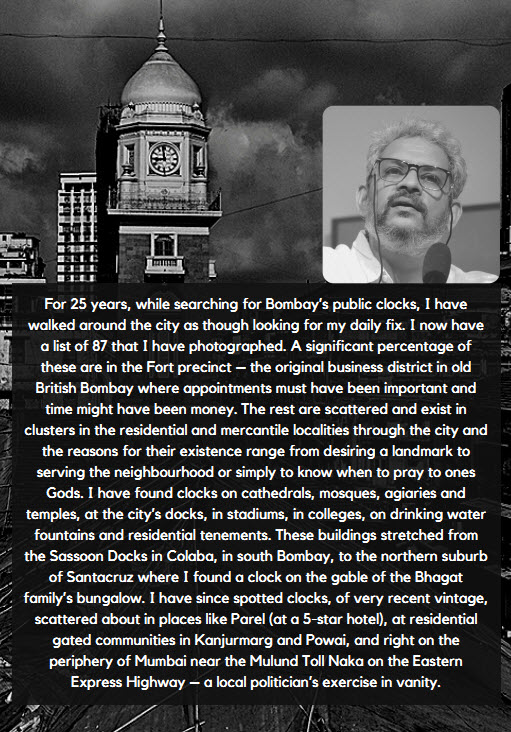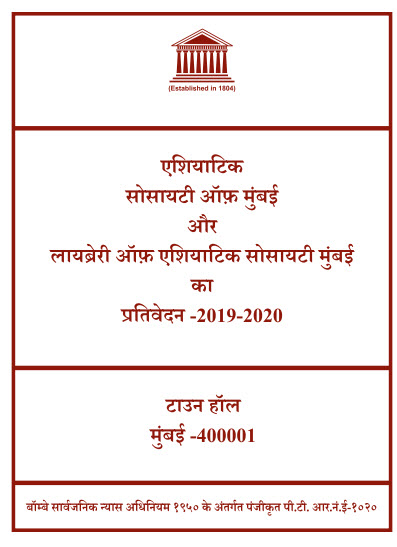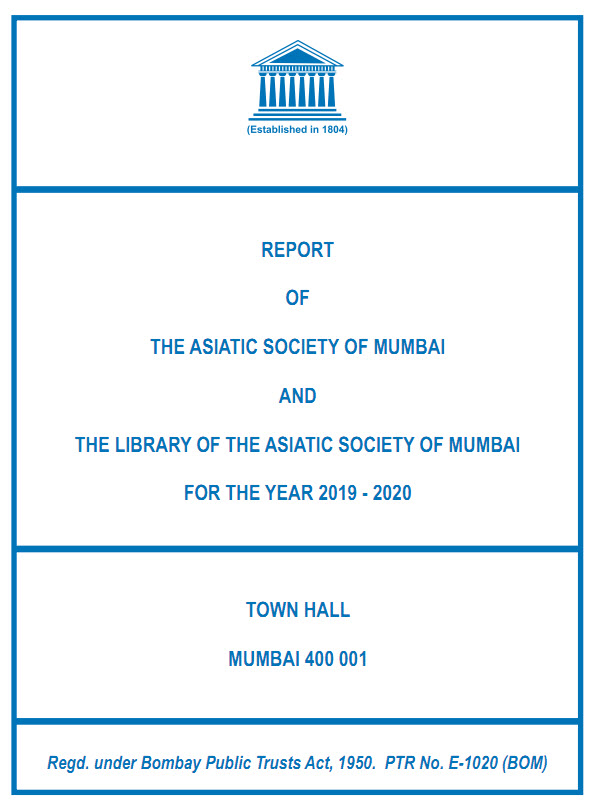Free Public Lecture by Chirodeep Chaudhuri
7 - 8.30 PM | 11.2.2021


Zoom Meeting
https://us02web.zoom.us/j/89138339562?pwd=SXJ1SXJldlpoZURVTDhCeGx5dGVEQT09
Meeting ID: 891 3833 9562 | Passcode: 903755
Abstract
For 25 years, while searching for Bombay’s public clocks, I have walked around the city as though looking for my daily fix. I now have a list of 87 that I have photographed. A significant percentage of these are in the Fort precinct – the original business district in old British Bombay where appointments must have been important and time might have been money. The rest are scattered and exist in clusters in the residential and mercantile localities through the city and the reasons for their existence range from desiring a landmark to serving the neighbourhood or simply to know when to pray to ones Gods. I have found clocks on cathedrals, mosques, agiaries and temples, at the city’s docks, in stadiums, in colleges, on drinking water fountains and residential tenements. These buildings stretched from the Sassoon Docks in Colaba, in south Bombay, to the northern suburb of Santacruz where I found a clock on the gable of the Bhagat family’s bungalow. I have since spotted clocks, of very recent vintage, scattered about in places like Parel (at a 5-star hotel), at residential gated communities in Kanjurmarg and Powai, and right on the periphery of Mumbai near the Mulund Toll Naka on the Eastern Express Highway – a local politician’s exercise in vanity.



















